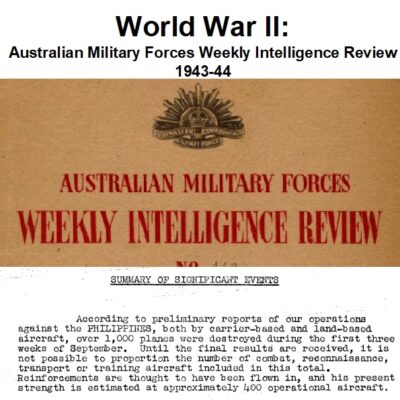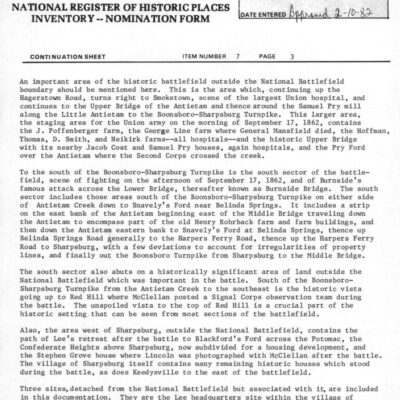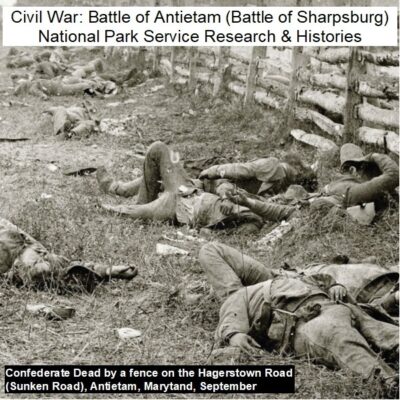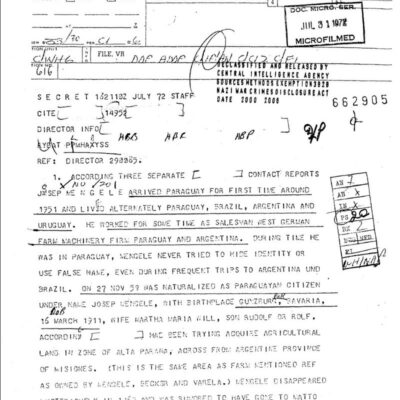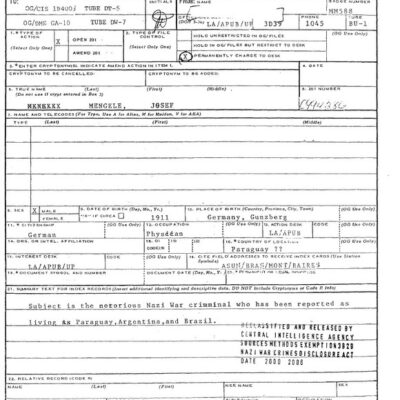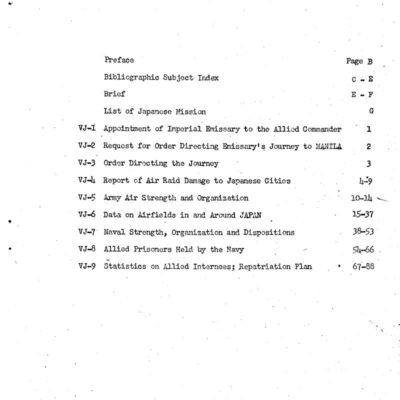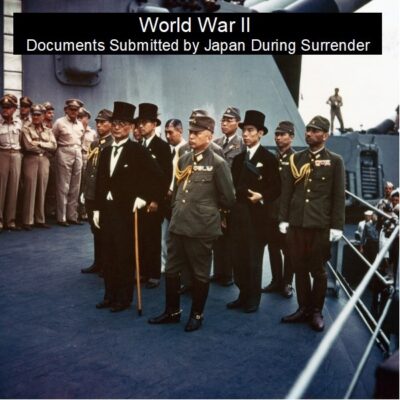
Description
U-Boat Warfare: Timeline and Key Figures
This timeline focuses on the sinking and scuttling of German U-boats and the blockade runner Anneliese Essberger as detailed in the U.S. Navy Post Mortem reports.
1942
- April 14, 1942: German U-boat U-85 is sunk by the USS Roper.
- May 9, 1942: German U-boat U-352 is sunk by the USCG Icarus at approximately 34.12.04 N., longitude 76.35 W. Survivors are interrogated.
- July 7, 1942: German U-boat U-701 is sunk by U.S. Army attack bomber No. 9-29-322, unit 296 B.S. Survivors are interrogated.
- August 6, 1942: German U-boat U-210 is sunk by HMCS Assiniboine. Survivors are interrogated.
- August 27, 1942: German U-boat U-94 is sunk by a USN PBY plane and HMCS Oakville. Survivors are interrogated.
- September 3, 1942: German U-boat U-162 is sunk by HH Ships Pathfinder, Vimy, and Quentin. Survivors are interrogated.
- October 2, 1942: German U-boat U-512 is sunk by a U.S. Army bomber, a Douglas B-18 Bolo (B-18a). Franz Machon is the sole survivor from the 51-man crew and is subsequently interrogated.
- November 14, 1942: German U-boat U-595 is grounded and scuttled off Cape Khamis, Algeria. Survivors are interrogated.
- November 21, 1942: The German blockade runner Anneliese Essberger is scuttled after interception by the U.S.S. Milwaukee, Cincinnati, and Somers. Survivors are interrogated.
1943
- January 6, 1943: German U-boat U-164 is sunk by a US PBY. Survivors are interrogated.
- February 22, 1943: German U-boat U-606 is sunk by the Polish destroyer Burza and the U.S.C.G. Campbell. Survivors are interrogated.
Post-War Information (Contextual)
- April 6, 1946: “Sonar – Detector of Submerged Submarines (1946),” a history of Sonar’s use against German U-boats during WWII, is released to the press.
- 1990: Montgomery C. Meigs publishes “Slide Rules and Submarines: American Scientists and Subsurface Warfare in World War II,” discussing the role of civilian scientists in developing countermeasures to the U-boat threat.
- 1999: A. Timothy Warnock publishes “The U.S. Army Air Forces in World War II. Confronting Hitler’s Submarine menace in the European Theater,” highlighting the AAF’s role in antisubmarine warfare.
Cast of Characters
This list includes individuals specifically named and general groups of participants identified in the sources.
- Franz Machon:
- Bio: The only known survivor of the German U-boat U-512, which was sunk by a U.S. Army bomber (Douglas B-18 Bolo) on October 2, 1942. His interrogation provided crucial information.
- Lt. Cdr. A.P. Har, USN:
- Bio: From Section Op413C4 of the Office of the Chief of Naval Operations. He produced the historical report “Sonar – Detector of Submerged Submarines” in 1946, detailing the use of sonar against German U-boats during WWII.
- Montgomery C. Meigs:
- Bio: Author of “Slide Rules and Submarines: American Scientists and Subsurface Warfare in World War II” (1990). He highlighted the crucial role of civilian scientists (“outsiders”) in developing new technologies and tactics, like sonar and radar, to counter the submarine threat in WWII.
- A. Timothy Warnock:
- Bio: Author of “The U.S. Army Air Forces in World War II. Confronting Hitler’s Submarine menace in the European Theater” (1999). His work shed light on the lesser-known but significant role of the U.S. Army Air Forces in antisubmarine warfare during WWII.
- Office of Naval Intelligence, Anti-Submarine Unit, Readiness Section Headquarters Commander-in-Chief U. S. Fleet:
- Bio: The U.S. Navy department responsible for preparing the “Post Mortems on Enemy Submarines” reports, which involved interrogating survivors and recovering diaries to gather intelligence on sunk or scuttled enemy submarines.
- U.S. Navy (USN):
- Bio: A branch of the United States Armed Forces, heavily involved in anti-submarine warfare during WWII. Specific vessels mentioned include the USS Roper, USS Milwaukee, USS Cincinnati, and USS Somers. USN PBY planes were also involved in sinking U-boats.
- U.S. Coast Guard (USCG):
- Bio: A branch of the United United States armed forces that performed military roles during WWII. Specific vessels mentioned include the USCG Icarus and USCG Campbell, both involved in sinking German U-boats.
- U.S. Army Air Forces (AAF):
- Bio: The aerial warfare service component of the United States Army during and immediately after World War II. They played a significant, though less known, role in antisubmarine warfare, particularly in the European-African-Middle Eastern theater, using bombers like the Douglas B-18 Bolo to hunt U-boats. Specific units mentioned include attack bomber No. 9-29-322, unit 296 B.S.
- Polish Navy (exiled in Great Britain):
- Bio: Naval forces of Poland that operated from Great Britain after the invasion of Poland. The Polish destroyer Burza is specifically mentioned as participating in the sinking of U-606.
- Royal Navy (RN):
- Bio: The United Kingdom’s naval warfare force. Mentioned as a key force whose efforts were supplemented by the AAF in confronting the U-boat menace. Specific ships mentioned are HH Ships Pathfinder, Vimy, and Quentin.
- Royal Air Force Coastal Command (RAF Coastal Command):
- Bio: A command of the Royal Air Force during WWII, responsible for the protection of Allied shipping and attacking enemy shipping and submarines. Mentioned as a key force whose efforts were supplemented by the AAF in confronting the U-boat menace.
- Royal Canadian Navy (RCN):
- Bio: Canada’s naval force. Specific vessels mentioned are HMCS Assiniboine and HMCS Oakville, both involved in sinking German U-boats.
- German U-boat Crews/Survivors:
- Bio: Personnel serving on German U-boats. Those who survived the sinking or scuttling of their vessels were interrogated by Allied forces to gather intelligence.
- German Blockade Runner Crew/Survivors:
- Bio: Personnel serving on German blockade runners, such as the Anneliese Essberger. Survivors from such vessels were also interrogated by Allied forces.
World War II: U.S. Navy Post Mortems on Enemy Submarines
406 pages, 11 United States Navy Post Mortems on Enemy Submarines reports prepared by the Office of Naval Intelligence, Anti-Submarine Unit, Readiness Section Headquarters Commander-in-Chief U. S. Fleet. Reports on German U-boats U-85 U-94 U-162 U-164 U-210 U-352 U-512 U-595 U-606 U-701 and the German blockade runner Anneliese Essberger which were scuttled or sunk due to actions by allied forces.
Highlights Include:
Information obtained from the only survivor of U-512, which was sunk by a U.S Army bomber, a Douglas B-18 Bolo, on October 2, 1942. Franz Machon was the only member of the 51-man crew on board U-512 to survive.
Details of the Polish destroyer Burza, which in conjunction with the U.S. Coast Guard Ship Campbell, sank the German U-boat U-606. The Polish Navy was exiled in Great Britain and participated in allied actions from there.
The reports in this collection include:
Information on German U-Boats No. 1
Information obtained from interviews with survivors and diaries recovered from bodies.
Includes U-85, Sunk by USS Roper, April 14, 1942; U-352, Sunk by USCG Icarus May 9, 1942; U-701, Sunk by Army AC, July 7, 1942.
Serial No.1 – Anneliese Essberger Scuttled After Interception by U.S.S. Milwaukee, Cincinnati, and Somers 11-21-42
Final report on the interrogation of survivors from German blockade runner Anneliese Essberger scuttled after interception by U.S.S. Milwaukee, Cincinnati, and Somers on November 21, 1942.
Serial No. 2 U-352 Sunk by U.S.C.G. Karus 5-9-42
Final report of interrogation of survivors from U-352 sunk by USCG Icarus on May 9, 1942, in approximate position latitude 34.12.04 N., longitude 76.35 W.
Serial No. 3 U-701 Sunk by U.S. Army Attack Bomber No. 9-29-322, Unit 296 B.S. 7-7-42
Report of interrogation of survivors of U-701 sunk by U.S. Army attack bomber No. 9-29-322, unit 296 B.S. On July 7, 1942.
Serial No. 4 U-210 Sunk by H.M.C.S. Assiniboine
Report of interrogation of survivors of U-210 sunk by HMCS Assiniboine August 6, 1942
Serial No. 5 U-94 Sunk by U.S.N. PBY Plane and H.M.C.S. Oakville 8-27-42
Report of interrogation of survivors from U-94 sunk (by USN PBY plane and HMCS Oakville) on August 27, 1942.
Serial No. 6 U-162 Sunk by H.H. Ships Pathfinder, Vimy and Quentin 9-3-42
Report of interrogation of survivors from U-162 sunk (by hm ships pathfinder, Vimy, and Quentin) on September 3, 1942.
Serial No. 7 U-595 Scuttled and Sunk off Cape Khams, Algeria 11-14-42
Report of interrogation of survivors from U-595 grounded and scuttled off Cape Khamis, Algeria, November 14, 1942.
Serial No. 8 U-164 Interrogation of Survivors 1-6-43
Report of interrogation of survivors from U-164 sunk by US PBY on January 6, 1943.
Serial No. 9 U-512 Sunk by Army Bomber B-18a 10-2-42
Report of interrogation of sole survivor from U-512 sunk by US Army bomber (b-18a) on October 2, 1942
Serial No. 10 U-606 Sunk by Polish Destroyer Burza and U.S.C.G. Campbell 2-25-43
Report of interrogation of survivors from U-606 sunk by polish destroyer Burza and USCG Campbell on February 22, 1943
In addition to the 406 pages of reports listed above this collection contains the following:
Sonar – Detector of Submerged Submarines (1946)
A history of Sonar used against German U-Boats during World War II, produced by Lt. Cdr. A.P. Har, USN, Section Op413C4 of the Office of the Chief of Naval Operations and given to the Navy Office of Public Information for release to the Press on 6 April 1946.
Slide Rules and Submarines: American Scientists and Subsurface Warfare in World War II by Montgomery C. Meigs (1990)
Abstract: In Slide Rules and Submarines Montgomery Meigs describes how the Allies learned to counter the U-boat threat. Using new technology—and new tactics derived from scientific methods—they devised countermeasures to defeat the German submarine menace. Then, continuing to apply those successful measures, they went on to negate the Japanese submarine threat in the Pacific. The author cites the crucial role of civilian scientists—the “outsiders”—who worked with military staffs and operational commanders of the campaign at sea. Their open minds and objective methods were essential for the application of such technical advances as sonar and radar, acoustic torpedoes, depth finders, and code breaking to the battle.
The U.S. Army Air Forces in World War II. Confronting Hitler’s Submarine menace in the European Theater by A. Timothy Warnock (1999)
Abstract: Perhaps one of the least known but significant roles of the Army Air Forces (AAF) was in antisubmarine warfare, particularly in the European-African-Middle Eastern theater. From the coasts of Greenland, Europe, and Africa to the mid-Atlantic, AAF aircraft hunted German U-boats that sank thousands of British and American transport ships early in the war. These missions supplemented the efforts of the Royal Navy, the Royal Air Force Coastal Command, and the U.S. Navy, and helped those sea forces to wrest control of the sea lanes from German submarines.

